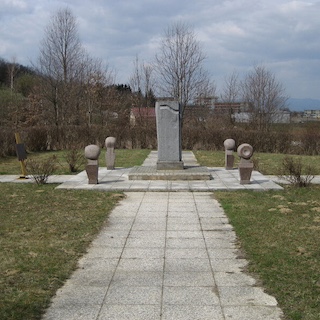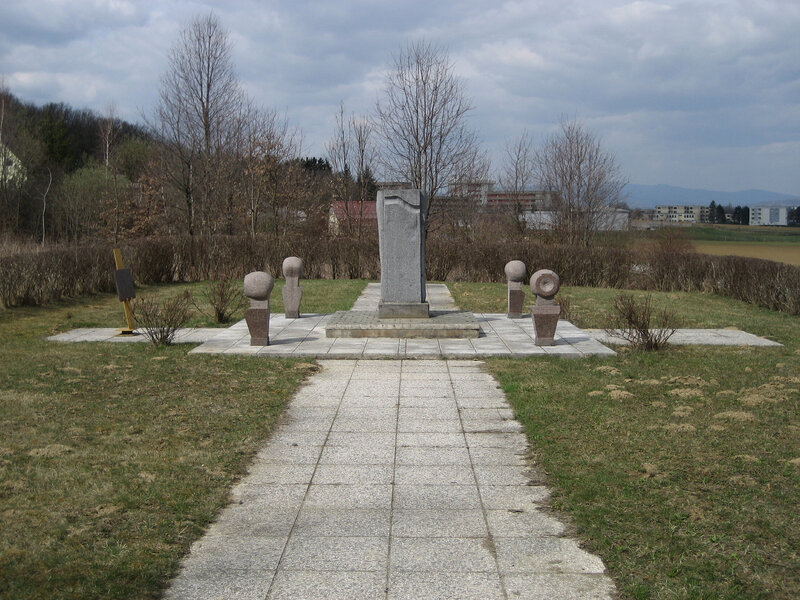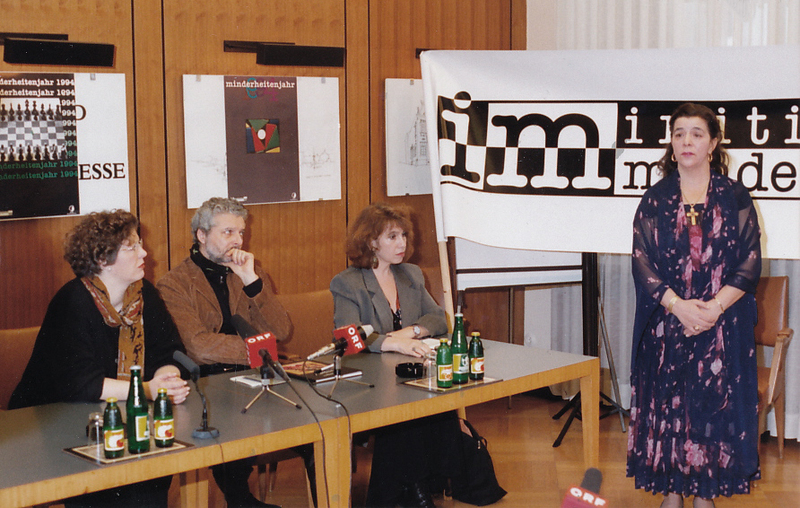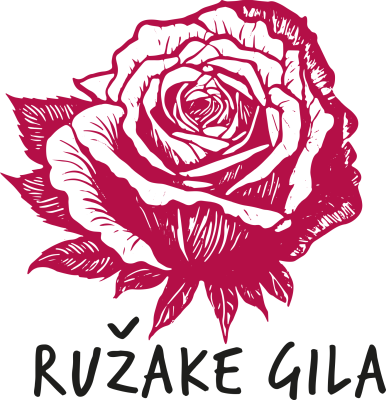
Phurde bajval phurde
- Genre
- langsames Lied
- Thema
- politisches Lied
- DOI
- doi.org/10.21939/mar0-0q04
Content
Recording
Four days after the attack in Oberwart on February 4, 1995, in which a pipe bomb killed four Roma, Ruža Nikolić-Lakatos asked ethnomusicologist Ursula Hemetek Phurde bajval phurde to record. She sang so that the young, murdered Roma would not be forgotten. The song is based on an old melody with new lyrics that speak of the dead, the suffering of the bereaved families, and survival.
Musical transcription based on Mosaik der Klänge. Musik der ethnischen and religiösen Minderheiten in Österreich
On February 4, 1995, the most serious political attack happened in Austria's history since the Second World War. A pipe bomb killed four young Roma in the small town of Oberwart in southern Burgenland. The assassin, a right-wing terrorist, was well-informed about the Roma due to the current political campaigns at the time. In 1989, the first Romani association was founded in Oberwart and with it a political movement. The recognition of the Roma as an Austrian ethnic group followed in 1993. The assassin masked the pipe bomb with a sign reading “Roma back to India”, which seems particularly cynical given Roma's history of migration and expulsion, which goes back over a thousand years. The attack sent the country into turmoil.
Ruža Nikolić-Lakatos was not related to those killed in Oberwart, but they were members of her people. When she received the news of the assassination, she cried at first and was in deep mourning. Then she did something customary in the Lovari tradition: Songs are composed in memory of events so that the news is passed on, so that the pain and suffering and the dead are not forgotten. The melodies are in the Lovari tradition and are traditional tunes that Ruža learned from her grandmother. The lyrics to Phurde bajval phurde were written by Ruža herself, using the traditional formulas of the Lovari language. The then 50-year-old singer expressed her pain and grief in a way that she had inherited from her ancestors, her singing being a personal expression carried by the cultural practices she grew up with. Ruža bore witness with the means of her tradition and thus took a stand on the shocking assassination.
Ethnomusicologist Ursula Hemetek describes Phurde bajval phurde as “one of the most moving recordings” she had ever made in her long field research work with the singer. The recording was made on February 10, 1995, five days after the assassination, in the Nikolić family home. One can hear the kitchen clock ticking in the background. The researcher notes that Ruža's voice was deeper than usual that day, marked by pain and sorrow.
The reactions in Austria to the attack were varied. There was a large state funeral, to which the federal government appeared almost in its entirety. Ursula Hemetek comments that the nation was divided: Some were suddenly best friends with the Roma, even though they had never met them before, while others regretted at the regulars' tables that the bomb had not caught more than four 'gypsies'. Charity events, solidarity rallies and Romani cultural events were held. Romani musicians were also in high demand afterwards, but mainly those styles of music that corresponded to the familiar musical clichés.
On March 6, 1995, a large charity concert was held in the Wiener Stadthalle to benefit the bereaved families of the four people who died in Oberwart. Ruža was invited to perform with Phurde bajval phurde and shared the stage with greats of the pop music scene at the time such as Udo Jürgens and Reinhard Fendrich. Phurde bajval phurde was later integrated into the CD Stimmen gegen Hass und Gewalt, as the unmistakable voice of an affected person.
Sources and further information:
- Hemetek, Ursula. Mosaik der Klänge. Musik der ethnischen und religiösen Minderheiten in Österreich. Wien: Böhlau, 2001.
- Hemetek, Ursula. "Sostar - Warum(Zakaj)? Artikel anlässlich der Bombenattentate in Oberwart" In: Stimme von und für Minderheiten 14 (1), 1995. S. 17. PDF
- Hemetek, Ursula. „Oberwart. Eine (Re)Aktion im Wiener Interkulttheater.“ In: Stimme von und für Minderheiten 22(1), 1997. S. 26. PDF
Commentary
(GERMAN ONLY) One can hear Ruža Nikolić-Lakatos dictating the text of Phurde bajval phurde to ethnomusicologist Ursula Hemetek so that she can write it down. They then search together for a coherent German translation. The recording was made as part of Ursula Hemetek's field research on February 10, 1995 in the house of the Nikolić family.
(GERMAN ONLY) Almost 30 years after the assassination, ethnomusicologist Ursula Hemetek reflects and comments on the creation and recording process of Phurde bajval phurde.
Lyrics
Stanza 1
| Phurde, bajval, phurde | Blow, wind, blow, |
| jaj de paj kopača e patra hej, | the leaves from the trees, |
| te šaj šaradjon de tele | so that the four Romani boys |
| kodoj laše šave. | will be covered. |
Stanza 2
| Kurke de teharin | On Sunday morning |
| jaj de kodo hiro šundam hej, | we received the news |
| kaj bombenca mudarde, mamo, | that four Romani boys |
| štar romane šaven. | had been killed by a bomb. |
Stanza 3
| Ašile korkora | Many small children |
| jaj de e but cigne šave hej, | are left behind, |
| jaj de čore taj korkora, mamo, | poor and alone, |
| taj vi lengo nipo. | the children and the families. |
Stanza 4
| Devlam, Devlam, bara, | My God, great God, |
| jaj de sostar kodo kherdan hej, | why did you allow |
| te mudaren e gaže, aba | that gaže (non-Roma) killed the young boys. |
| kodoj terne šaven. |
Stanza 5
| Bara raja Devlam, | Great God, |
| jaj de šukares mangav tu hej, | I ask you with all my heart, |
| Žutin e bute Romenge | help the many Roma |
| taj ker amenge pača. | and give us peace. |
Video
Excerpt from the ORF production Kultura: Roma, in which Ruža Nikolić-Lakatos sings Phurde bajval phurde. The video was filmed in the family home in 1995 and incorporates images from the funeral in Oberwart.
In his book Landfahrer. On the Paths of a Roma Man (2000), Mišo Nikolić comments on the making of this video:
„After the bombing, we listened to the news on TV every day, and Ruzsa cried every time she watched it, thinking, my God, what if something like this happened to our four sons. So she made a text about the four Roma, which she sang to an ancient Romani melody. Mrs. K., who worked in television, knew about it and wanted to have a recording of the song. She came to our house with a camera crew and recorded Ruzsa singing the song and we, Sascha, Mischa and I, accompanied her. Then the movie was shown on TV. Mrs. K. made it incredibly beautiful. During Ruzsa's song, they showed the place where the four Roma had gone up in the air, then the burning candles and flowers that people had laid at this spot, then the cemetery and the four coffins, the many people attending the funeral and the open sky. And all these images were accompanied by Ruzsa's song, and in between they showed footage of Ruzsa singing and crying, and of us accompanying her with our instruments.“
Source:
- Nikolić, Mišo. Landfahrer. Auf den Wegen eines Rom. Grünen Bildungswerkstatt Minderheiten (Hrsg.) Klagenfurt: Drava, 2000
Further Material about the Attack in Oberwart (in German)
Articles and Reports
- Kontext und Aufarbeitung des Attentats von Oberwart (inklusive Biographien der Opfer, Oberwarter Erklärung der Österreichischen Volksgruppen, Gedenken an das Attentat, Polizeiprotokolle, etc.) (https://www.burgenland-roma.at/index.php/geschichte/das-attentat)
- ORF Bericht: „Gedenken an Roma-Attentat vor 25 Jahren“ (4. Februar 2020: https://burgenland.orf.at/stories/3033007/)
- ORF Bericht: „Das Polizeiprotokoll zum Roma-Attentat“ (4. Februar 2020: https://burgenland.orf.at/stories/3033152/)
- Bericht: Wächter über Oberwart, Ein Projekt des Offenen Hauses Oberwart: „Das Attentat" (http://www.waechter-oberwart.at/roma-denkmal/das-attentat/)
- Ansprache von Gerhard Baumgartner: "Das Ende der Illusionen" (https://www.doew.at/neues/gerhard-baumgartner-das-ende-der-illusionen)
Radio
- Ö1 Beitrag / Mittagsjournal vom 6.2.1995 zu Oberwarter Attentat: https://www.mediathek.at/journale/suche/treffer/?pool=BWEB&uid=114F4E7C-213-000D5-00000C00-114E66EA&vol=101967&cHash=e3c7adb65b5ba6b9dfc4c00d5aa18d13
- Ö1 Beitrag / Mittagsjournal vom 3.10.1999 zum Hafturteil von Franz Fuchs mit Reaktionen von z.B. Stefan Horvath: https://www.mediathek.at/journale/suche/treffer/?pool=BWEB&uid=118C1AD4-1C5-0070E-00000128-118B6032&cHash=5e5010514a7a96b6b1c66d04e973b380
Publications
- Hemetek, Ursula. Mosaik der Klänge. Musik der ethnischen und religiösen Minderheiten in Österreich. Wien: Böhlau, 2001.
- Hemetek, Ursula. "Sostar - Warum(Zakaj)? Artikel anläßlich der Bombenattentate in Oberwart." In: Stimme von und für Minderheiten 14 (1), 1995. S. 17. PDF
- Hemetek, Ursula. „Oberwart. Eine (Re)Aktion im Wiener Interkulttheater.“ In: Stimme von und für Minderheiten 22(1), 1997. S. 26. PDF
- Horvath, Stefan. Katzenstreu. Erzählung. Oberwart: edition lex liszt 12, 2007.
Photos
Memorial in Oberwart
© Petar Tyran (1995)
Ruža Nikolić-Lakatos sings Phurde bajval phurde or the first time on February 10, 1995 at the press conference of the Initiative Minderheiten on the Oberwart attack.
Zitierempfehlung anzeigen
Bitte zitieren Sie diese Seite wie folgt:
Music and Minorities Research Center, "Phurde bajval phurde", Ružake gila, zuletzt besucht am Loading date..., doi.org/10.21939/mar0-0q04




